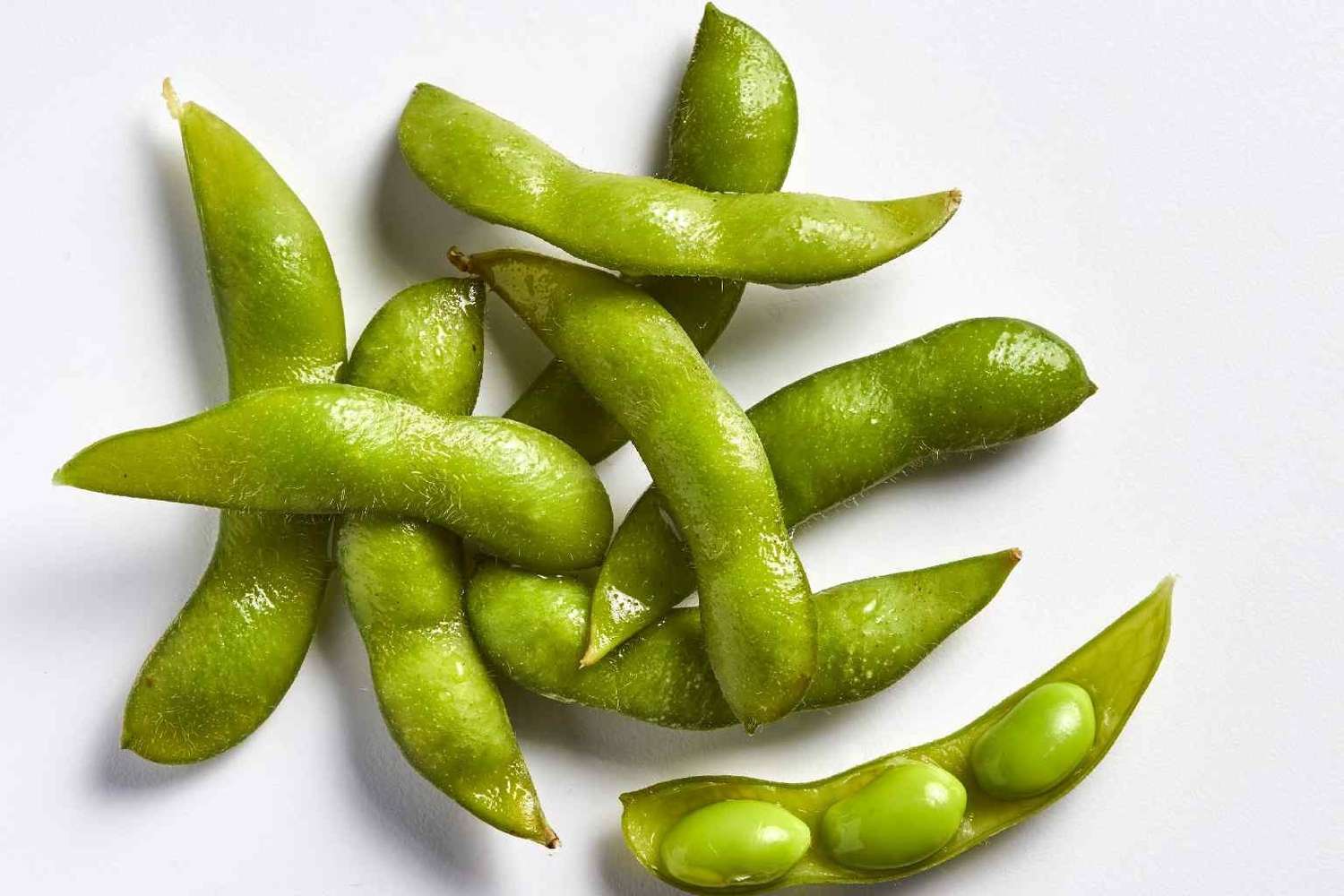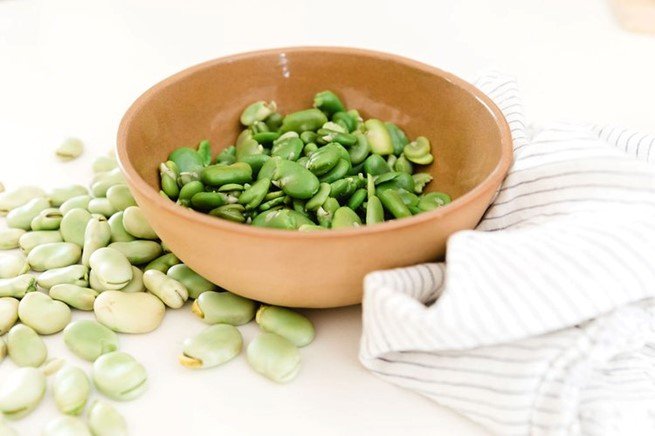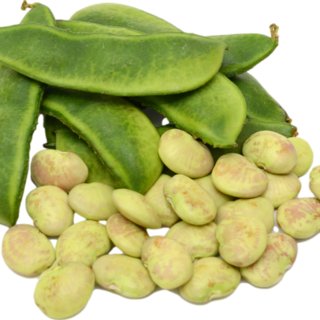
Introduction
Lima Beans Vs Fava Beans: An Overview Of The Topic
When it comes to legumes, lima beans and fava beans are two popular choices with distinct characteristics. This article aims to provide an overview of the nutritional differences between these two beans, as well as their uses in cooking. Understanding these distinctions can help individuals make informed choices when incorporating them into their diet.
History And Cultivation Of Lima Beans And Fava Beans
Lima beans, also known as butter beans, have a long history that can be traced back to South America. They were a staple food for ancient civilizations such as the Incas and Mayans. Today, lima beans are grown worldwide, with major producers including Peru, India, and the United States.
On the other hand, fava beans, also called broad beans, have been consumed for thousands of years in regions including Europe, North Africa, and the Middle East. They are one of the oldest cultivated crops in the world. Today, fava beans are widely grown across different continents.
Nutritional Differences Between Fava Beans And Lima Beans
Fava beans and lima beans offer distinct nutritional profiles that can benefit individuals in various ways:
- Fava beans are high in iron and protein, making them a great option for those looking to increase their iron intake or add plant-based protein to their diet. They also contain a range of essential vitamins, including vitamin B1, B6, and C.
- Lima beans, on the other hand, are known for their magnesium content. This mineral plays a vital role in various bodily functions, including nerve function, blood sugar regulation, and bone health. Lima beans are also a good source of protein.
Uses In Cooking
Fava beans and lima beans may resemble each other, but their uses in cooking differ:
- Fava beans are commonly used in Italian and North African cuisines. They can be boiled, fried, or even made into a puree. Fava beans add a unique flavor and texture to dishes like salads, soups, and pasta.
- Lima beans are popular in South American and Caribbean cuisine. They are often used in stews, rice dishes, and soups. Lima beans have a creamy texture when cooked and can absorb flavors well.
In conclusion, while both fava beans and lima beans offer nutritional benefits, their different culinary uses make them suitable for specific cuisines. Incorporating these legumes into your diet can add variety and contribute to a balanced and nutritious meal.
Nutritional Profile
Nutritional Benefits Of Lima Beans
Lima beans, also known as butter beans, offer a range of nutritional benefits that make them a healthy addition to your diet. They are a good source of protein, providing essential amino acids that are important for muscle growth and repair. Lima beans also contain dietary fiber, promoting healthy digestion and aiding in weight management. Additionally, they are rich in folate, a B-vitamin that is crucial for red blood cell production and DNA synthesis. Lima beans also provide magnesium, a mineral that supports bone health, nerve function, and energy production. Lastly, they are a good source of potassium, necessary for maintaining healthy blood pressure levels.
Nutritional Benefits Of Fava Beans
Fava beans, also known as broad beans, have their own unique set of nutritional benefits. They are an excellent source of iron, an essential mineral that is involved in the transportation of oxygen throughout the body. Iron is especially important for individuals at risk of iron deficiency, such as pregnant women and those with certain medical conditions. Fava beans are also rich in protein, making them a valuable plant-based protein source for vegetarians and vegans. Additionally, they contain a variety of vitamins, including vitamin B1, B6, and C. These vitamins play important roles in energy production, nerve function, and immune system support. Fava beans are also a good source of dietary fiber, aiding in digestion and promoting satiety.
In conclusion, both Lima beans and fava beans offer unique nutritional benefits. Lima beans provide magnesium and are a good source of protein, while fava beans are high in iron and contain a variety of essential vitamins. Considering their distinct culinary uses, both beans can be incorporated into a balanced diet to add variety and contribute to a nutritious meal.
Protein And Fiber Content
Protein Content In Lima Beans And Fava Beans
Lima beans and fava beans are both excellent sources of protein. Protein is essential for building and repairing tissues, and it also plays a crucial role in many biological processes in the body. Lima beans are a particularly good source of protein, providing essential amino acids that are important for muscle growth and repair. Fava beans, on the other hand, are also rich in protein and are a valuable plant-based protein source for vegetarians and vegans.
Fiber Content In Lima Beans And Fava Beans
Both Lima beans and fava beans are high in dietary fiber. Fiber is important for maintaining a healthy digestive system and promoting regular bowel movements. Lima beans contain dietary fiber that promotes healthy digestion and aids in weight management. Fava beans are also a good source of dietary fiber, which helps to regulate blood sugar levels and promote satiety.
When comparing the protein and fiber content, Lima beans are slightly higher in protein content compared to fava beans. Both beans, however, provide a significant amount of protein and fiber, making them nutritious additions to any diet.
In conclusion, Lima beans and fava beans are both healthy choices that offer unique nutritional benefits. Lima beans are a good source of protein and provide magnesium, while fava beans are high in iron and contain essential vitamins. Incorporating both beans into a well-balanced diet can add variety and ensure you’re getting a range of nutrients. So whether you prefer the earthy flavor of Lima beans or the creamier texture of fava beans, both options are delicious and nutritious additions to your meals.

Vitamins And Minerals
Vitamin Content In Lima Beans And Fava Beans
Lima beans and fava beans both contain a range of vitamins that are important for overall health and well-being.
- Lima beans are an excellent source of vitamin C, which plays a crucial role in boosting the immune system and promoting healthy skin.
- Fava beans, on the other hand, are rich in vitamin B6, which is essential for brain development and function.
- Lima beans are also higher in thiamin and niacin compared to fava beans, which are important for energy production and maintaining a healthy nervous system.
- Fava beans, however, contain more folate, a vital nutrient for cell growth and development.
Mineral Content In Lima Beans And Fava Beans
Both Lima beans and fava beans are rich in minerals that are necessary for various bodily functions.
- Lima beans are particularly high in iron, which is essential for the formation of red blood cells and carrying oxygen throughout the body.
- Fava beans also contain a good amount of iron, although not as much as lima beans.
- Lima beans and fava beans both contain potassium, an electrolyte that helps regulate blood pressure and maintain proper fluid balance.
- Lima beans are also a good source of magnesium, a mineral that is necessary for muscle and nerve function.
In conclusion, Lima beans and fava beans offer different vitamins and minerals, each providing unique nutritional benefits. Lima beans are a great source of vitamin C and iron, while fava beans are rich in vitamin B6 and folate. By incorporating both beans into your diet, you can ensure a diverse range of nutrients that contribute to overall health and well-being. Whether you prefer the slightly higher protein content of Lima beans or the creamier texture of fava beans, both options are nutritious additions to your meals.
Culinary Uses
Lima Beans: Ideal For Soups And Stews
Lima beans are commonly used in South American and Caribbean cuisine, particularly in soups and stews. Their creamy texture and mild flavor make them a perfect addition to these hearty dishes. Lima beans can be cooked until soft and tender, adding substance and thickness to the broth. They can also be mashed or pureed to create a thickening agent for soups or a base for sauces.
Fava Beans: Perfect For Dips And Spreads
Fava beans, on the other hand, are more commonly used in dishes from Italy and North Africa. They have a slightly grassy and nutty flavor, similar to chickpeas. Fava beans can be prepared in various ways, including boiling, frying, or even making them into a puree. One popular culinary use of fava beans is in dips and spreads. Blending cooked fava beans with herbs, garlic, and olive oil creates a delicious and nutritious spread that can be enjoyed with bread or crackers.
When it comes to versatility in the kitchen, both lima beans and fava beans offer unique culinary experiences. Lima beans add creaminess and depth to soups and stews, while fava beans bring a distinct flavor to dips and spreads. Experimenting with different recipes and cuisines can help you discover new ways to incorporate these beans into your meals.
Overall, both lima beans and fava beans have their own distinct uses in cooking. Whether you prefer the heartiness of a Lima bean soup or the creaminess of a fava bean dip, both beans offer a delicious and nutritious addition to your culinary repertoire. So go ahead, explore the culinary world with these versatile legumes and enjoy the diverse flavors they bring to your dishes.
Flavors And Textures
Earthy Flavor And Creamy Texture Of Lima Beans
Lima beans are known for their creamy texture and mild, sweet flavor. They have a soft consistency that melts in your mouth, making them perfect for soups and stews. Lima beans bring a richness and depth to these dishes, adding substance and thickness to the broth. Their subtle sweetness enhances the overall flavor profile, creating a comforting and satisfying meal.
Comparing The Taste And Texture Of Fava Beans
Fava beans, on the other hand, have a firmer texture and a unique flavor profile. They are slightly earthy and nutty, similar to the taste of chickpeas. Fava beans offer a more robust and hearty experience compared to lima beans. Their firmness adds a satisfying bite to dishes and makes them suitable for salads and recipes that require whole beans. Fava beans can also be mashed or pureed to make dips and spreads, showcasing their versatility in the kitchen.
Culinary Uses
Lima Beans: Ideal For Soups And Stews
Lima beans are commonly used in South American and Caribbean cuisine, particularly in soups and stews. Their creamy texture and mild flavor make them a perfect addition to these hearty dishes. Lima beans can be cooked until soft and tender, adding substance and thickness to the broth. They can also be mashed or pureed to create a thickening agent for soups or a base for sauces.
Fava Beans: Perfect For Dips And Spreads
Fava beans, on the other hand, are more commonly used in dishes from Italy and North Africa. They have a slightly grassy and nutty flavor, similar to chickpeas. Fava beans can be prepared in various ways, including boiling, frying, or even making them into a puree. One popular culinary use of fava beans is in dips and spreads. Blending cooked fava beans with herbs, garlic, and olive oil creates a delicious and nutritious spread that can be enjoyed with bread or crackers.
When it comes to versatility in the kitchen, both lima beans and fava beans offer unique culinary experiences. Lima beans add creaminess and depth to soups and stews, while fava beans bring a distinct flavor to dips and spreads. Experimenting with different recipes and cuisines can help you discover new ways to incorporate these beans into your meals.
Overall, both lima beans and fava beans have their own distinct uses in cooking. Whether you prefer the heartiness of a Lima bean soup or the creaminess of a fava bean dip, both beans offer a delicious and nutritious addition to your culinary repertoire. So go ahead, explore the culinary world with these versatile legumes and enjoy the diverse flavors they bring to your dishes.

Regional Cuisine
Lima Beans In Various Cuisines
Lima beans are widely used in South American and Caribbean cuisine. Their creamy texture and mild flavor make them a popular choice for soups and stews in these regions. In South American dishes, lima beans are often paired with corn or rice, reflecting the local flavors and ingredients. In Caribbean cuisine, lima beans are also incorporated into traditional dishes, adding richness and substance to the meals.
Fava Beans In Different Culinary Traditions
Fava beans have a prominent presence in dishes from Italy and North Africa. These beans have a slightly grassy and nutty flavor, similar to chickpeas. In Italian cuisine, fava beans are commonly used in pasta dishes, salads, and risottos, showcasing their versatility. In North African cuisine, fava beans are a staple in recipes like ful medames, where they are often cooked with spices and served with bread.
When it comes to culinary uses, lima beans and fava beans offer distinct experiences. Lima beans contribute a creamy texture and mild flavor to soups and stews, making them perfect for hearty dishes. On the other hand, fava beans provide a firmer texture and a unique flavor profile, making them suitable for dips, spreads, and salads.
Overall, both lima beans and fava beans bring their own flavors and textures to various culinary traditions. Their versatility allows them to be incorporated into a wide range of dishes, from soups to spreads. Whether you are exploring South American cuisine or experimenting with Italian flavors, these beans can enhance your culinary adventures and add a nutritious touch to your meals. So go ahead and embrace the different uses of lima beans and fava beans in your cooking, and enjoy the diverse flavors they offer.
Cooking Methods
Boiling, Frying, And Puree Options For Lima Beans
In terms of cooking methods, Lima beans can be boiled, fried, or even made into a puree. Boiling these beans is a common way to enjoy them as a side dish, similar to edamame. They can also be added to soups and stews for added creaminess and flavor. Frying Lima beans can provide a crispy texture and can be a delicious addition to salads or even as a topping for dishes. Another option is to make a puree out of Lima beans, which can be used as a spread or dip.
Versatile Cooking Techniques For Fava Beans
Fava beans offer a range of versatile cooking techniques. They can be boiled, steamed, grilled, sautéed, pureed, roasted, and even fried. Boiling or steaming Fava beans allows them to be enjoyed as a side dish, similar to edamame. Steaming also helps to preserve their texture. Grilling Fava beans adds a smoky flavor, and they can be a great addition to salads or served as a side dish. Sautéing Fava beans can bring out their natural nutty flavor and pair well with other vegetables. Fava beans can also be pureed to create spreads and dips, such as in traditional recipes like ful medames. Lastly, roasting or frying Fava beans can provide a crunchy texture, making them a delicious snack option.
By using these various cooking methods, both Lima beans and Fava beans can be transformed into a wide range of dishes, from hearty soups and stews to dips and spreads. Whether you prefer the creamy texture of Lima beans or the unique flavor of Fava beans, both legumes offer plenty of opportunities for culinary exploration and can elevate the flavors of your meals. So don’t hesitate to experiment with different cooking techniques and incorporate Lima beans and Fava beans into your recipes for a nutritious and delicious addition to your meals.
Cooking Methods
Boiling, Frying, And Puree Options For Lima Beans
Lima beans can be cooked in various ways to suit different culinary preferences. Boiling is a common method, similar to edamame, and they can be enjoyed as a side dish or added to soups and stews for creaminess. Frying them can add a crispy texture, perfect for salads or as a topping. Lima beans can also be transformed into a puree, suitable as a spread or dip.
Versatile Cooking Techniques For Fava Beans
Fava beans offer a range of cooking techniques that can be explored. They can be boiled or steamed to be enjoyed as a side dish, similar to edamame, while preserving their texture. Grilling fava beans imparts a smoky flavor, making them a great addition to salads or as a side dish. Sautéing fava beans brings out their natural nutty flavor and complements other vegetables well. Fava beans can also be pureed for spreads and dips, or even roasted or fried for a crunchy snack.
By utilizing these cooking methods, both Lima beans and Fava beans can be incorporated into a wide range of dishes. From hearty soups and stews to dips and spreads, these legumes offer plenty of culinary opportunities. Whether you prefer the creamy texture of Lima beans or the unique flavor of Fava beans, both can elevate the taste of your meals. Don’t hesitate to experiment with different cooking techniques and incorporate Lima beans and Fava beans into your recipes for a nutritious and delicious addition to your meals.
Conclusion
In conclusion, while both fava beans and lima beans are nutritious options, they do have some differences. Lima beans are higher in protein and folate, as well as richer in copper and phosphorus. On the other hand, fava beans are higher in fiber, manganese, and potassium, as well as vitamins B1, B5, and B6. Both beans can be enjoyed through various cooking methods, such as boiling, frying, pureeing, steaming, grilling, sautéing, or roasting. With their versatility, Lima beans and Fava beans can be incorporated into a wide range of dishes, allowing for culinary exploration and enhancing the flavors of your meals.
FAQ: Lima Beans vs Fava Beans – Nutritional Benefits and Culinary Uses
Q: What are Lima Beans and Fava Beans?
A: Lima beans, also known as butter beans, are small, creamy-white beans with a delicate flavor. Fava beans, on the other hand, are large, green beans with a slightly earthy taste. Both are legumes that belong to the same family and are commonly used in various cuisines.
Q: What are the nutritional benefits of Lima Beans?
A: Lima beans are packed with essential nutrients. They are an excellent source of dietary fiber, protein, iron, folate, potassium, and magnesium. They also contain vitamins such as vitamin C and vitamin K. Lima beans provide a range of health benefits, including promoting heart health, regulating blood sugar levels, and supporting digestive health.
Q: What are the nutritional benefits of Fava Beans?
A: Fava beans are highly nutritious and offer similar health benefits to Lima beans. They are a rich source of dietary fiber, protein, iron, folate, potassium, and vitamin C. Fava beans are also low in fat and contain no cholesterol, making them a healthy addition to a balanced diet. They provide crucial antioxidants and can help improve cardiovascular health, regulate blood pressure, and support brain function.
Q: Are there any differences in the nutritional content of Lima Beans and Fava Beans?
A: While both Lima beans and Fava beans share similar nutritional profiles, there are slight differences in their nutrient composition. Lima beans are higher in iron and vitamin C, whereas Fava beans contain more potassium and folic acid. However, the nutritional differences between the two are relatively small, and both offer valuable health benefits.
Q: How can Lima Beans be used in cooking?
A: Lima beans have a delicate, creamy texture that makes them versatile in the kitchen. They can be used in various dishes, such as soups, stews, salads, and side dishes. Lima beans are often pureed to make dips and spreads or added to casseroles and vegetarian dishes. They can even be roasted and seasoned as a healthy snack.
Q: How can Fava Beans be used in cooking?
A: Fava beans have a unique nutty flavor and buttery texture. They are often used in Mediterranean and Middle Eastern cuisines. Fava beans can be enjoyed in salads, pasta dishes, risottos, and pureed into dips like the famous Egyptian dish “Ful Medames.” They are also popularly paired with herbs, garlic, and olive oil to make delicious spreads.
Q: How do Lima Beans and Fava Beans compare in terms of culinary uses?
A: Lima beans are generally more widely available and commonly used in a variety of global cuisines. They pair well with a wide range of flavors and can be cooked in various ways. Fava beans, although less commonly used, have a distinct taste and are prominent in Mediterranean and Middle Eastern dishes. They offer a unique culinary experience and are favored by those who enjoy their specific flavor profile.
Q: Can Lima Beans and Fava Beans be substituted for each other in recipes?
A: While Lima beans and Fava beans both belong to the legume family, their flavors and textures differ. Consequently, substituting one for the other in a recipe may affect the taste and overall outcome. It is best to stick to the specific bean called for in a recipe. However, if necessary, Lima beans can be used as a substitute for Fava beans and vice versa, keeping in mind the potential flavor variation.
In summary, both Lima beans and Fava beans offer impressive nutritional benefits and can be used in a variety of delicious dishes. Whether you prefer the subtle creaminess of Lima beans or the nutty flavor of Fava beans, incorporating these legumes into your diet can enhance your culinary experiences and support your overall well-being.

At Yuan Food, we take pride in bringing the authentic flavors of Chinese cuisine to the heart of Plano, Texas. Located at 2049 Coit Rd, our restaurant has been a beloved culinary destination since our establishment. Our story begins with a deep-rooted passion for sharing the rich culinary heritage of China with the local community. Drawing inspiration from time-honored recipes and culinary traditions, we have curated a menu that showcases the diverse and vibrant tapestry of Chinese gastronomy.